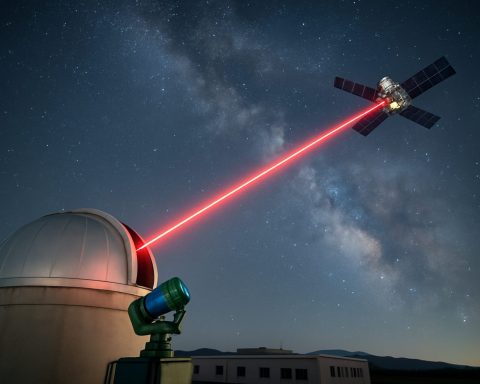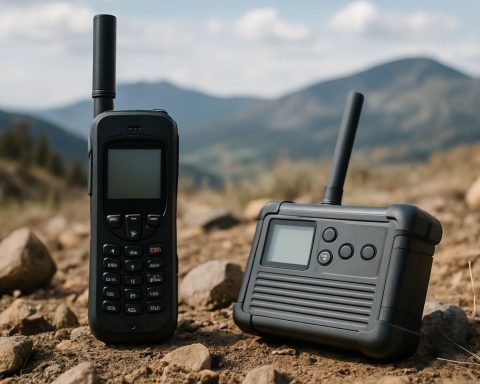- Uber forms a new strategic partnership with Chinese startup Momenta to advance autonomous urban mobility in Europe by 2026.
- Collaboration builds on Uber’s existing alliances with Waymo, Wayve, WeRide, and May Mobility, enhancing its transformative transport ecosystem.
- Momenta aims to deploy robotaxis on European streets with initial safety operators, driven by their vision for an autonomous urban landscape.
- Despite selling its self-driving division in 2020, Uber’s partnerships illustrate a shift towards collaboration rather than competition in autonomous tech development.
- Tesla’s pursuit of full autonomy contrasts with Uber’s partnership-driven approach, allowing Uber to integrate cutting-edge technology without in-house development risks.
- Uber’s strategy leverages global expertise, focusing on sustainable, efficient transport solutions poised to shape future smart cities.
- This collaborative model positions Uber to lead in the evolving landscape of urban transportation.
In a maneuver that underscores its vision of a tech-driven future, Uber continues to forge strategic alliances in the autonomous vehicle space. The latest spark from this innovation torch is a new partnership with Momenta, a Chinese self-driving startup. This collaboration promises not just a technological partnership but a step toward reshaping urban mobility across Europe by early 2026.
Uber has previously collaborated with several prominent players in the autonomous vehicle market, including Waymo, the Alphabet subsidiary known for pioneering technology. The company has also linked arms with Wayve, WeRide, and, most recently, Ann Arbor’s May Mobility. Each partnership layers a complex web of expertise, accelerating Uber’s march towards a transformative transportation ecosystem.
Momenta, guided by CEO Xudong Cao, hails this partnership as pivotal. From its headquarters in China, Momenta dreams of an autonomous world where vehicles navigate seamlessly through urban landscapes with minimal human intervention. This collaboration promises to deploy robotaxis on European streets, a reality anticipated within three years that will incorporate safety operators initially—ensuring technological reliability and public confidence.
Though some might regard Uber’s decision to sell its self-driving division to Aurora Innovation back in 2020 as a relinquishment of its ambitious self-driving pursuits, this series of partnerships paints a different picture. Uber appears to be navigating the future of transportation through collaboration rather than direct competition, focusing on leveraging partners’ innovation while it maintains its robust ride-hailing and delivery frameworks.
Simultaneously, Tesla — spearheaded by the audacious Elon Musk — is making waves with its own autonomous aspirations. Musk has pledged that Teslas will soon achieve full autonomy via software updates, with Austin as the proving ground. Nevertheless, Uber’s strategy of multiple partnerships allows it to remain agile, harnessing cutting-edge technologies tailored for platforms its rivals may not readily access.
This narrative of alliances reflects a broader strategy—enabling Uber to integrate the best technologies available, all while avoiding the costly and uncertain path of developing these systems in-house. It’s a strategic ballet, embracing the strengths of global innovators in the quest for a driverless future. Uber’s ecosystem strategy might convert visions of smart cities into reality, one rider at a time.
In embracing a model of collaboration, not competition, Uber plants itself firmly in the future of urban transport. The web of partnerships it has woven reveals a crucial understanding: leveraging diverse expertise can often trump an isolated pursuit. As cities evolve and the demand for sustainable and efficient transport swells, this strategy could cement Uber’s place at the forefront of a transformative mobility revolution.
Uber’s Strategic Move Into the Future of Urban Mobility: What You Need to Know
Uber and Its Expanding Web of Partnerships in Autonomous Vehicles
Uber’s strategic alliances in the autonomous vehicle space underscore its commitment to a tech-driven future of urban mobility. By partnering with companies like Momenta, Waymo, Wayve, WeRide, and May Mobility, Uber is positioning itself at the forefront of a transformative transportation ecosystem. This article dives deep into the nuances of Uber’s strategy and explores the industry’s landscape, challenges, opportunities, and what this means for consumers and cities.
Key Highlights of Uber’s Collaboration with Momenta
– Timeline for Deployment: Uber and Momenta’s partnership aims to have robotaxis operational on European streets by early 2026. These vehicles will initially incorporate safety operators to ensure technological reliability and build public trust.
– Vision for Autonomous Navigation: Momenta, under the guidance of CEO Xudong Cao, envisions a future where vehicles navigate urban landscapes seamlessly with minimal human intervention.
– Safety and Public Confidence: Deploying safety operators initially is a strategy to ensure the new technology’s acceptance and reliability in public domains.
How Do Uber’s Partnerships Differentiate It in the Market?
Uber’s strategy of collaborating rather than directly competing positions it uniquely in the autonomous driving market, allowing it to leverage the best available technology without incurring the costs associated with in-house development.
– Collaborative Ecosystem: By leveraging diverse global expertise, Uber is well poised to incorporate cutting-edge technology into its platforms that others might not readily access.
– Cost Efficiency: This strategy avoids the high costs and risks involved in developing autonomous vehicle technology independently.
Real-World Use Cases and Impact
– Urban Mobility Transformation: As Uber edges closer to an autonomous future, this technology promises to reshape urban landscapes, reduce traffic congestion, and enhance sustainable transit solutions.
– Economic Opportunities: The deployment of autonomous vehicles is likely to create new economic opportunities within cities through improved logistics and reduced transportation costs.
Industry Trends and Future Prospects
– Market Forecast: According to Grand View Research, the global autonomous vehicle market is expected to reach USD 1.8 trillion by 2030, growing at a CAGR of 63.1%. Uber’s diverse partnerships place it in an excellent position to capitalize on this growth.
– Technological Evolution: Innovations in AI and machine learning continue to drive advancements in autonomous vehicle capabilities, with significant investments flowing into the field.
Challenges and Limitations
– Regulatory Hurdles: The regulatory landscape for autonomous vehicles remains complex, with different standards and requirements across various countries and regions.
– Public Acceptance: Building public trust in autonomous driving technology is a significant hurdle, necessitating rigorous safety testing and transparent communication.
Insights and Predictions
Uber’s collaborative approach could very well be a game-changer, possibly leading to the integration of highly adaptable and efficient autonomous solutions in cities worldwide. Its capacity to pivot and adapt by weaving in various technologies means it can respond to different market needs swiftly.
Actionable Recommendations for Readers
– Stay Informed: Follow updates on autonomous vehicle technologies and policies in your region to understand how they may affect your commuting options.
– Engage with Pilot Programs: If you live in a city where pilot programs are available, participating in trials can provide firsthand experience with these emerging transportation options.
Conclusion
Uber’s journey toward a driverless future through strategic partnerships reflects a shift to collaborative innovation. This innovative approach ensures the company remains at the forefront of the mobility revolution. By integrating technology in a user-friendly and efficient manner, Uber is setting the stage for a future where autonomous urban transport is not just an aspiration, but a reality.
For more general information about Uber’s ongoing innovations and projects, visit Uber.










